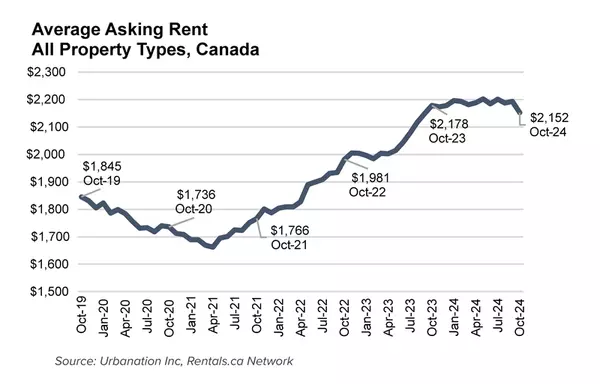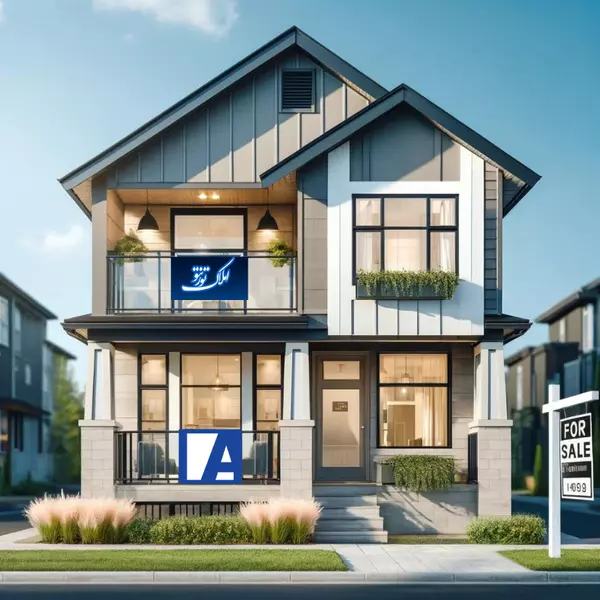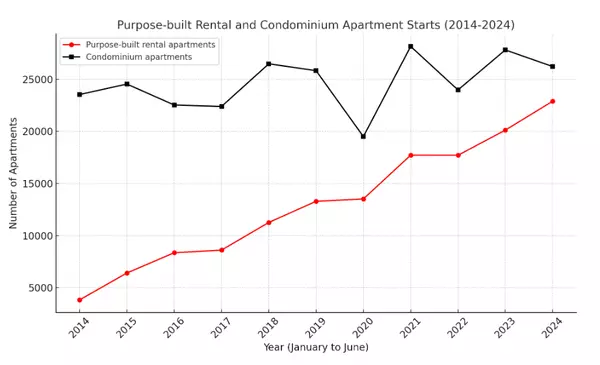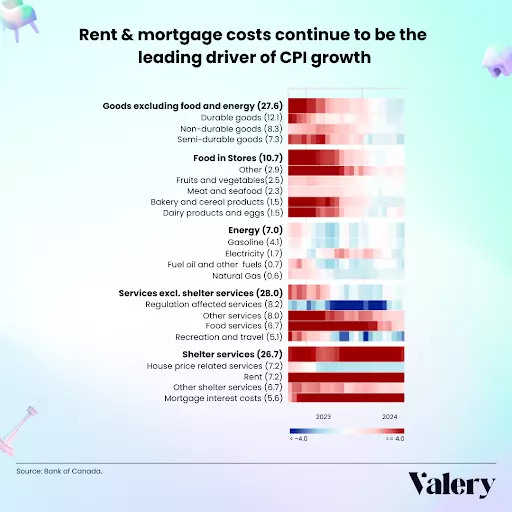
Can home staging be tailored to suit different budgets and seller needs?
Welcome to your regular staging advice column designed exclusively for real estate professionals. Whether you’re grappling with how to enhance the visual appeal of your listings or seeking innovative strategies to captivate your target audience, you’ve come to the right place. This is your opportunity to pose any and all staging-related questions and receive expert advice, for free. No query is too big or small — if it’s about elevating the look of your real estate, we want to hear it and we want to help! Email your questions to ninadoiron@isodesign.ca When preparing a property for sale, you may face a critical question: can home staging be customized to fit various budgets and meet the specific needs of sellers? The short answer is yes. Effective home staging can be adjusted to accommodate a range of financial constraints while still enhancing a property’s appeal to potential buyers. Home staging is a powerful marketing tool that can significantly impact a property’s sale price and time on the market. For these reasons, staging is a worthwhile investment, but the challenge lies in tailoring this service to fit different financial scenarios. This article will explore how you can leverage flexible staging solutions to suit different budgets and seller requirements, with practical and actionable tips as well as pros and cons for each solution. We’ll start with the most affordable solutions first. 1. Staging consultation For sellers with a limited budget, a DIY staging consultation is a cost-effective solution. Professional stagers can provide a detailed report with actionable steps that homeowners can implement themselves. This approach allows sellers to benefit from expert advice without the higher costs associated with full-service staging. A professional home staging consultation can include decluttering tips, furniture arrangement advice and suggestions for inexpensive updates like new throw pillows and fresh paint. The total cost ($250-$500) is a fraction of full-service staging, yet the home can still present beautifully if homeowners follow all the advice provided. Most stagers will offer this affordable solution. Pros Cost-effective Homeowners receive professional step-by-step guidance Flexibility to implement changes at their own pace Cons Requires homeowner effort and time May cause delays if homeowners cannot execute on time May lack the polished look of professionally executed staging Results depend on the homeowner’s ability to follow through with recommendations 2. Virtual staging Virtual staging is an innovative and budget-friendly alternative to traditional staging. Digital images of empty, sparsely furnished or outdated rooms can be enhanced with virtual furniture and decor to create appealing online listings. There are apps today that allow you to create your own virtually staged photos. Virtual staging can range between $50-$150 per photo. Pros Cost-effective Quick and easy to implement Ideal for online listings Cons Only effective for online viewing; physical showings may disappoint potential buyers Buyers might feel misled if the home appears significantly different in person Limited to digital presentation; cannot address physical imperfections when buyers view the property in person 3. Showcasing/photo-prep staging Showcasing staging, sometimes referred to as photo-prep staging, is a budget-friendly option that utilizes only the homeowner’s belongings to prepare a property for sale. Unlike traditional staging, which involves renting furniture and accessories, showcasing staging focuses on rearranging and enhancing what’s already available in the home. The stager may recommend the purchase of a few minor items, but the primary cost is their time and expertise. This approach allows homeowners to benefit from professional staging services without the significant expense, often costing less than $1,000. Pros Affordable, often costing less than $1,000 Utilizes existing furniture and decor, minimizing disruption Quick and easy to implement Adds a personal touch to the home Cons Limited by the quality and style of the homeowner’s belongings May not achieve the same polished look as traditional staging Potential buyers may find it harder to visualize the home’s full potential Less flexibility in creating a universally appealing aesthetic 4. Occupied staging Occupied staging leverages the seller’s existing furniture and decor, enhanced with select rented items as needed. Depending on the property, this might involve adding just a few accessories or incorporating some key furniture pieces. This option is ideal for sellers who continue to live in their homes during the sale process but want to elevate the overall appeal of their space. With the right accents and professional guidance, occupied staging can effectively highlight the property’s best features, making it more attractive to potential buyers. Occupied home staging can range from $1,500-$3,500 Pros Utilizes existing furniture, reducing costs Allows sellers to stay in their home Professional touches and minimal rental items can add to the home’s charm Cons Limited by the quality and style of existing furniture Potentially disruptive for the occupants May not achieve the same level of polish as a fully staged home 5. Partial staging Partial staging is a versatile approach that can be applied to both occupied and vacant properties. For occupied homes, partial staging typically involves adding or rearranging a selection of furniture and accessories to enhance the home’s appeal. This service generally ranges from $1,000-$2,000. In the case of vacant properties, partial staging might include furnishing key areas like the living room, dining room and primary suite to give potential buyers a sense of the home’s potential. The cost for this level of staging usually falls between $3,000 and $5,000. This approach is ideal for sellers who want to highlight key spaces without the expense of staging the entire property. Pros Highlights key areas More affordable than full-service staging Effective in showcasing the home’s best features Cons Other areas of the home may appear less appealing Potential buyers might feel the home is incomplete Limited to selected spaces, which might not be enough in highly competitive markets 6. Full-service staging for maximum impact For sellers seeking maximum impact and who have a larger budget, full-service staging offers a transformative approach that dramatically enhances a property’s appeal. This comprehensive solution is particularly effective for vacant properties and involves the complete furnishing and decoration of all indoor and sometimes outdoor spaces. The investment for fully staging a four-bedroom property with a finished basement typically ranges from $6,000-$10,000. This cost reflects the high level of detail and the quality of furnishings used to present the home in the best possible light. Pros Comprehensive and cohesive look throughout Professional execution ensures high-quality presentation Maximizes appeal and potential sale price Cons Higher cost Requires more coordination and time Might be overkill for lower-priced or less competitive markets Tailoring home staging to suit different budgets and seller needs is not only possible but essential for maximizing a property’s market potential. You can offer a range of staging options, from budget-friendly consultations to full-service staging, ensuring that every seller can present their home in the best possible light. By understanding and accommodating various financial constraints and property types, you’ll help your sellers achieve successful sales in any market. Got home staging questions for a future column? Submit them to ninadoiron@isodesign.ca

How early should sellers prep their homes for sale? A step-by-step guide to maximize property appeal
Welcome to Ask A Stager, your regular staging advice column designed exclusively for real estate professionals. Whether you’re grappling with how to enhance the visual appeal of your listings or seeking innovative strategies to captivate your target audience, you’ve come to the right place. Ask A Stager offers you the opportunity to pose any and all staging-related questions and receive expert advice, for free. No query is too big or small — if it’s about elevating the look of your real estate, we want to hear it and we want to help! Email your questions to ninadoiron@isodesign.ca As real estate professionals, guiding your clients through the home selling process is crucial to ensuring a smooth and successful transaction. One key aspect of this process is pre-sale preparation, which can significantly impact the property’s appeal, market time and final sale price. Start prepping 1-6 months out A common question about this from sellers is, “How far in advance should we start preparing our home before listing?” The answer depends on several factors, including the condition of the property, the local market conditions and the level of preparation needed. However, a general guideline is to begin the pre-sale preparation process at least one to six months before listing the property. This timeline allows ample time for a comprehensive approach, ensuring the property is market-ready and maximized for its potential while minimizing stress and overwhelm. Here’s a step-by-step plan to help sellers prepare for a successful sale. Step 1: Initial consultation and planning (1-3 months before listing) Objective: Obtain expert insights on the property’s condition and create a tailored action plan to strategically invest time and resources, maximizing return on investment (ROI) in key areas. Start the process by engaging with a professional home stager to provide an in-depth consultation with the sellers. During this meeting, the stager will evaluate the property’s current state, including both interior and exterior conditions. Discuss the local market trends and the target demographic for the area. Based on these factors, a tailored plan will be created to include necessary repairs, upgrades and staging strategies. It’s also essential to discuss the budget and timeline, ensuring that the sellers understand the potential ROI for each proposed improvement. Step 2: Decluttering and deep cleaning (1-3 months before listing) Objective: Create a clean and clutter-free environment to highlight the home’s best features. Decluttering is one of the most effective ways to prepare a home for sale. Advise the sellers to begin by sorting through their belongings and deciding what to keep, donate, sell or discard. This process can be time-consuming, so starting early is crucial. If this step feels overwhelming or emotionally taxing, suggest that your client hire a professional home organizer or move manager. These experts can often declutter the entire house within a week, whereas it might take sellers months or even years to accomplish the same task, depending on the home’s size and the volume of belongings. Once the home is decluttered, recommend a deep cleaning of the entire property, including carpets, windows and hard-to-reach areas. This task should be done prior to staging day. A clean home not only looks better in photos but also creates a positive first impression during showings. Step 3: Repairs and maintenance (1-2 months before listing) Objective: Address necessary repairs to prevent buyer concerns and maximize the property’s value. Minor repairs and maintenance can make a significant difference in how buyers perceive the property. Hire a professional inspector to complete a pre-sale inspection to identify any issues that might be raised during a buyer’s inspection. During peak season, securing handyman services can be challenging due to high demand. To avoid delays, it’s crucial to plan and schedule these services well in advance. This will help ensure that all necessary repairs are completed before the listing date, allowing your property to be market-ready on time. Addressing these repairs beforehand can prevent potential deal-breakers and avoid last-minute negotiations. Common repairs include fixing leaky faucets, repairing broken tiles, patching holes in walls and ensuring all appliances and systems are in good working order. Step 4: Cosmetic upgrades and improvements (1-2 months before listing) Objective: Enhance the property’s visual appeal and update outdated features. Cosmetic upgrades can provide a high ROI by making the property more attractive to buyers. Suggest neutral paint colors to appeal to a broader audience and replace outdated fixtures or hardware. Consider recommending cost-effective updates such as new light fixtures, updated cabinetry hardware and modern faucets. These small changes can significantly improve the overall aesthetic without a substantial financial investment. If the home feels outdated and the budget permits, consider updating the kitchen and bathrooms. While a full renovation might be costly, there are budget-friendly improvements such as painting the cabinets, changing out the hardware and replacing the countertop that can significantly enhance the perceived value for buyers. Step 5: Landscaping and curb appeal (2-4 weeks before listing) Objective: Make a strong first impression with well-maintained exterior spaces. Curb appeal is a critical factor in attracting potential buyers. As the saying goes, the first impression starts at the curb. Advise sellers to invest in landscaping, including trimming bushes, mowing the lawn, planting flowers and adding fresh mulch. Clean and spray the driveway, repair walkways and consider painting or replacing the front door if needed. Keep in mind that a home’s exterior often sets the tone for what buyers can expect throughout. A welcoming exterior can increase the number of showings and the property’s perceived value. Step 6: Staging and professional photography (1 month before listing) Objective: Showcase the property’s best features and create an emotional connection with buyers. Staging is an essential marketing component of the selling process. Engage a professional stager to arrange furniture and decor in a way that highlights the property’s strengths and minimizes any weaknesses. Similar to handyman, painter and contractor services, professional stagers are also in high demand during peak season. It’s crucial to book their services early to ensure your target listing date stays on track and doesn’t get delayed. The actual staging date should be scheduled for no later than 2-3 days ahead of the target listing date. The goal of professional staging is to create a neutral yet inviting space where potential buyers can envision themselves living. Once staging is complete, get professional photography to capture high-quality images for the listing. Excellent photos are vital for online listings, as they are often the first impression buyers have of the property. Step 7: Final preparations and marketing (1-2 weeks before listing) Objective: Ensure all aspects of the property and marketing materials are ready for the market. In the final weeks before listing, review all aspects of the property and marketing strategy. Ensure that all repairs, upgrades and staging elements are completed and in place. Prepare all necessary marketing materials, including listing descriptions, floor plans and virtual tours. Plan the launch strategy, including open houses and targeted online advertising, to generate maximum interest from potential buyers. Starting the pre-sale preparation process one to six months before listing gives sellers ample time to address all necessary aspects of getting their home market-ready. Guiding your clients through this timeline ensures that the property is presented in the best possible light, ultimately leading to a quicker sale and a higher final sale price. Early preparation allows for thoughtful decision-making, budgeting and execution, reducing stress and maximizing the property’s potential in a competitive market. By following this step-by-step plan, sellers can approach the market with confidence, knowing their property is well-prepared and positioned for success. As a real estate professional, providing this level of guidance and support not only benefits your clients but also enhances your reputation as a knowledgeable and reliable professional in the industry. Got home staging questions for a future column? Submit them to ninadoiron@isodesign.ca

Mortgage Update: Mortgage growth ticks up
In March, residential mortgage debt in Canada increased by 0.3% compared to the previous month (when adjusted for seasonal variations). On a year-over-year basis, mortgage debt rose by 3.4%. This annual growth rate is the slowest Canada has seen since the year 2000. For non-mortgage consumer lending, there was a 0.4% rise in March. This increase was primarily driven by a significant 1.1% growth in credit card balances at chartered banks. Over the past year, credit card debt at these banks has surged by 13%. In March, domestic business lending by chartered banks in Canada declined for the third consecutive month. This marks a notable trend as the last similar three-month decline occurred during mid-2020. On a year-over-year basis, the growth rate of business loans has slowed to its lowest level outside of recessionary periods since the early 2000s. Bank Updates The Bank of Nova Scotia (BNS) has reported positive growth in its mortgage portfolio for the second month in a row as of March, following a year of consecutive declines. This uptick marks a significant turnaround for BNS, as its mortgage balances had been falling for the previous 12 months. Despite this recent growth, BNS’s annual mortgage growth rate remains negative and is significantly lower than that of its competitor, Toronto-Dominion Bank (TD), which continues to enjoy a robust 9% annual growth rate. CIBC has been experiencing an ongoing shift. A year ago, CIBC was ordered by the banking regulator, the Office of the Superintendent of Financial Institutions (OSFI), to address significant lapses in its mortgage underwriting practices. This regulatory intervention came after a period of turbulence in CIBC’s mortgage business. From 2017 to 2019, CIBC transitioned from being a leading bank in adding new mortgages to falling behind its competitors. This decline coincided with heightened regulatory scrutiny from OSFI, particularly because mortgages comprised more than half of CIBC’s total loan portfolio, and because of its substantial involvement in high-value housing markets like Toronto and Vancouver. In 2019, CIBC’s CEO, Victor Dodig, acknowledged that the bank had overreacted to the regulatory pressure by severely curtailing its mortgage growth. This overcorrection stifled its competitiveness in the mortgage market. The influence of OSFI’s scrutiny during 2018 and 2019 is now evident as it appears to have significantly constrained CIBC’s loan growth. Currently, CIBC is again experiencing a decline in mortgage balances, raising questions about whether this is a strategic reduction in response to current market conditions or if CIBC is once more under regulatory watch. Non-Prime Lending Slowdown In March, Equitable Bank (EQB) experienced a second consecutive monthly decline in its total residential mortgage loans. This trend is notable as it reflects a shift in their uninsured balances, which are considered their core non-prime product. For the first time since Q4 2020, these uninsured balances have been declining over a three-month period. Similarly, Canadian Western Bank (CWB), which offers Optimum mortgages as part of its active non-prime strategy, is observing comparable trends. Residential loans at CWB are declining year-over-year for the first time on record. Additionally, there is now an annual decrease in CWB’s total deposits, marking a significant change in its financial dynamics. Mortgage Arrears and Small Lenders Mortgage arrears are experiencing a notable increase at small lenders, particularly those focused on non-prime lending in Canada. This trend is highlighted in recent data from the Bank of Canada’s Financial System Review, indicating a sharper rise in mortgage arrears in these lenders compared to larger financial institutions. In Canada, almost all non-prime mortgages have short-term durations of 1 or 2 years. Equitable Bank exemplifies this with a weighted average loan term of 1.5 years for uninsured mortgages. Borrowers with 2-year non-prime terms facing renewal today are encountering an average increase of approximately 250 basis points (bps) in interest rates. Although this rate hike has eased from its peak, its cumulative impact on borrowers takes time to manifest. Over the past year, there has been a significant increase in net impaired loans already, rising from 20 basis points (bps) to 90 bps. This is a notable trend, and there is a concern that this upward trend may extend to prime lenders in the future. Falling Mortgage Rates Recent data shows a decrease in mortgage rates last week, particularly notable in deep discounted 5-year fixed rates, which dropped by 5 basis points (bps). As a result, using these updated rates and assuming stable housing prices in May, the monthly mortgage payment required to purchase a typical home has declined to $3,225. This figure represents a $330 decrease from the peak observed in September 2023, but remains double the amount compared to 2021.
Categories
Recent Posts











